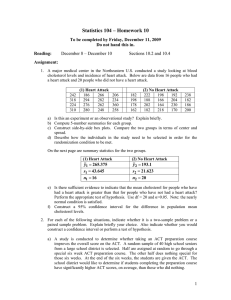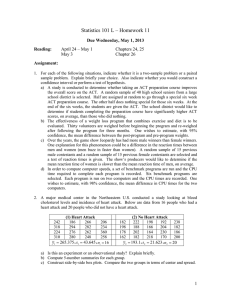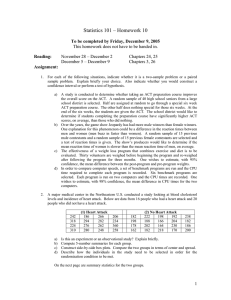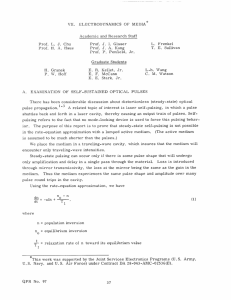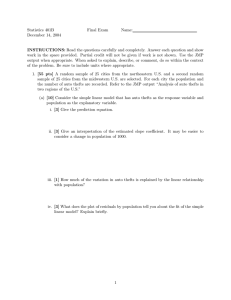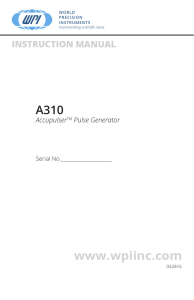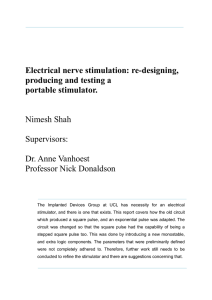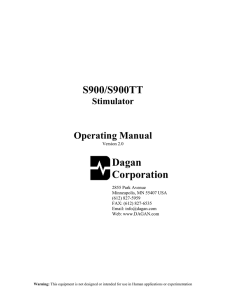Work sheet for multiple indicator (dummy) variables
advertisement
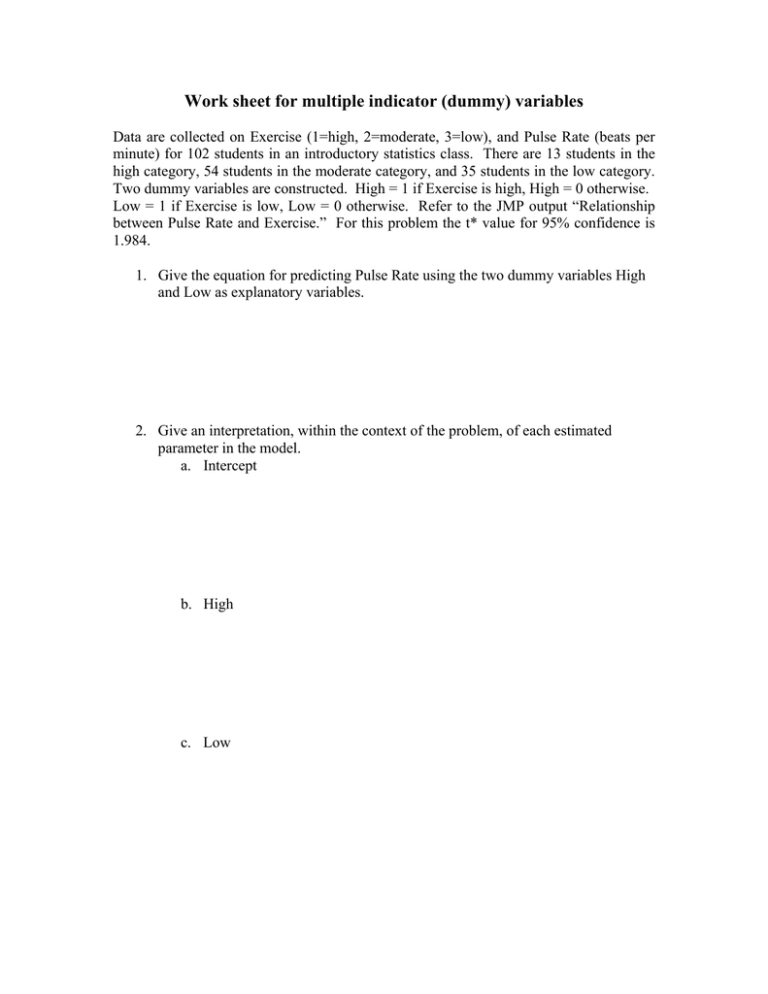
Work sheet for multiple indicator (dummy) variables Data are collected on Exercise (1=high, 2=moderate, 3=low), and Pulse Rate (beats per minute) for 102 students in an introductory statistics class. There are 13 students in the high category, 54 students in the moderate category, and 35 students in the low category. Two dummy variables are constructed. High = 1 if Exercise is high, High = 0 otherwise. Low = 1 if Exercise is low, Low = 0 otherwise. Refer to the JMP output “Relationship between Pulse Rate and Exercise.” For this problem the t* value for 95% confidence is 1.984. 1. Give the equation for predicting Pulse Rate using the two dummy variables High and Low as explanatory variables. 2. Give an interpretation, within the context of the problem, of each estimated parameter in the model. a. Intercept b. High c. Low 3. Construct a 95% confidence interval for the difference between the mean pulse rate for students in the high exercise category and the mean pulse rate for students in the moderate exercise category. 4. Based on your interval in 3., is the difference in means statistically significant? Explain briefly. 5. Construct a 95% prediction interval (confidence interval for an individual) for the pulse rate of an individual in the moderate exercise group. 6. What does the plot of residuals by predicted values tell you about the conditions necessary for the statistical analysis? Explain briefly. Test Statistic: t = estimate − null value Std Error Confidence Interval: estimate ± t * (Std Error ) Prediction Interval: estimate ± t * MS Error + (Std Error ) 2




